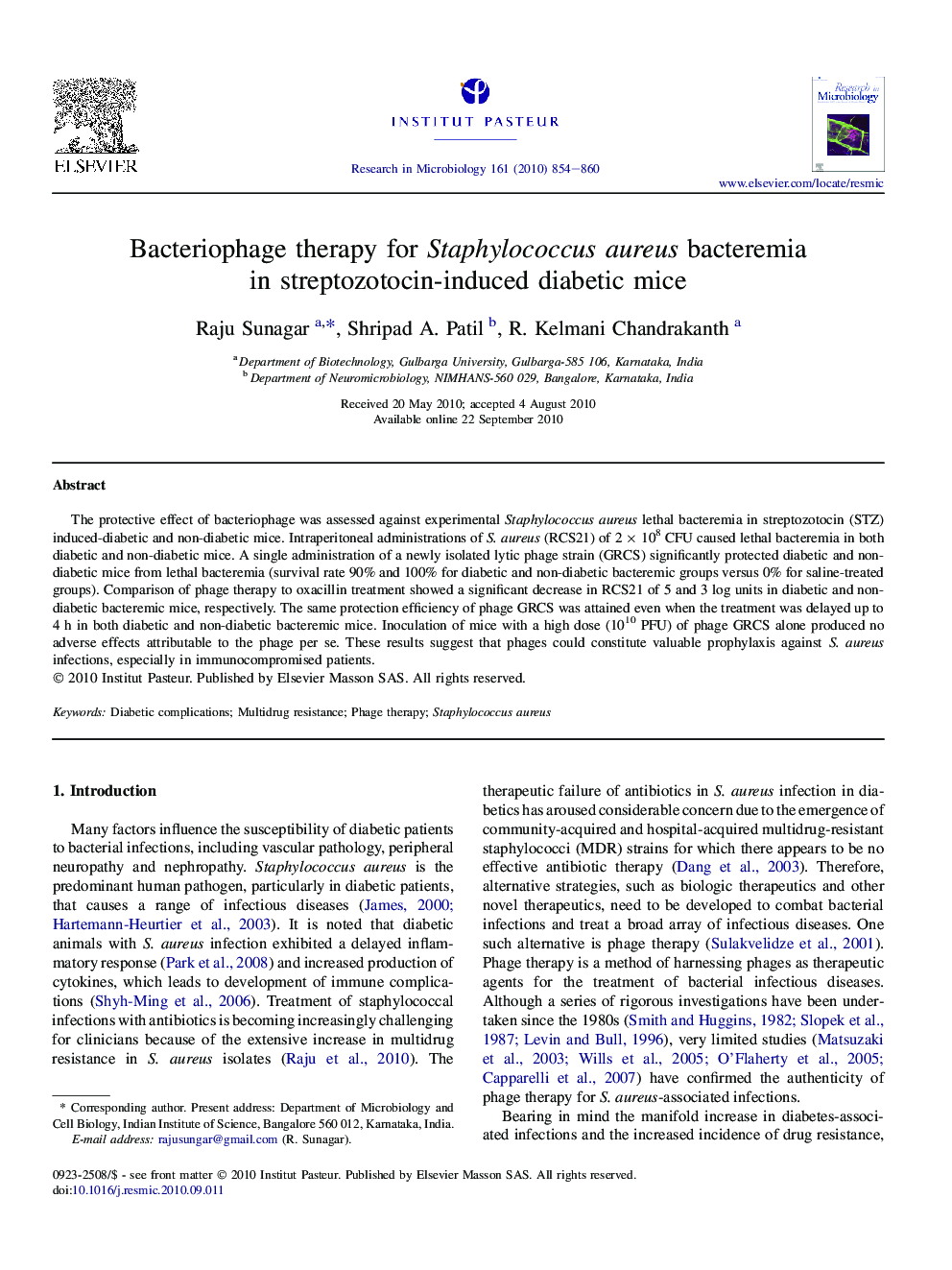| Article ID | Journal | Published Year | Pages | File Type |
|---|---|---|---|---|
| 4358814 | Research in Microbiology | 2010 | 7 Pages |
The protective effect of bacteriophage was assessed against experimental Staphylococcus aureus lethal bacteremia in streptozotocin (STZ) induced-diabetic and non-diabetic mice. Intraperitoneal administrations of S. aureus (RCS21) of 2 × 108 CFU caused lethal bacteremia in both diabetic and non-diabetic mice. A single administration of a newly isolated lytic phage strain (GRCS) significantly protected diabetic and non-diabetic mice from lethal bacteremia (survival rate 90% and 100% for diabetic and non-diabetic bacteremic groups versus 0% for saline-treated groups). Comparison of phage therapy to oxacillin treatment showed a significant decrease in RCS21 of 5 and 3 log units in diabetic and non-diabetic bacteremic mice, respectively. The same protection efficiency of phage GRCS was attained even when the treatment was delayed up to 4 h in both diabetic and non-diabetic bacteremic mice. Inoculation of mice with a high dose (1010 PFU) of phage GRCS alone produced no adverse effects attributable to the phage per se. These results suggest that phages could constitute valuable prophylaxis against S. aureus infections, especially in immunocompromised patients.
